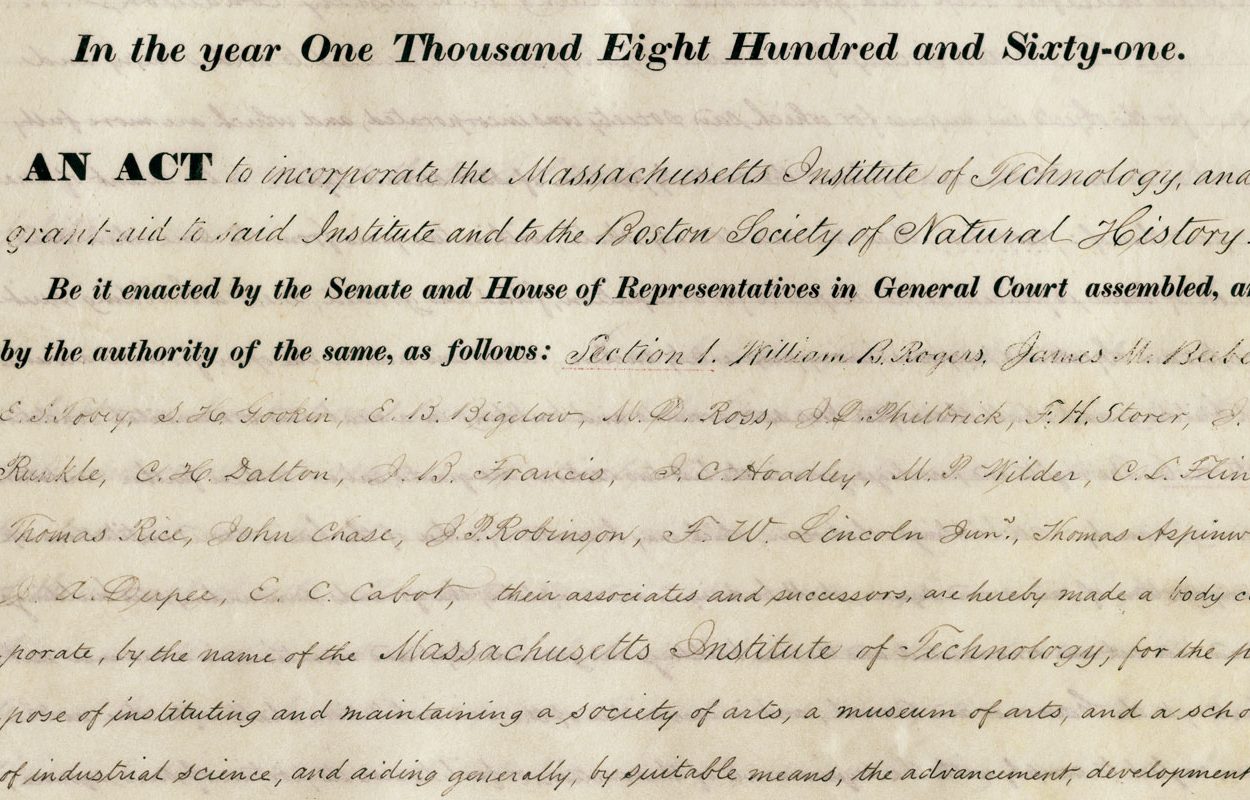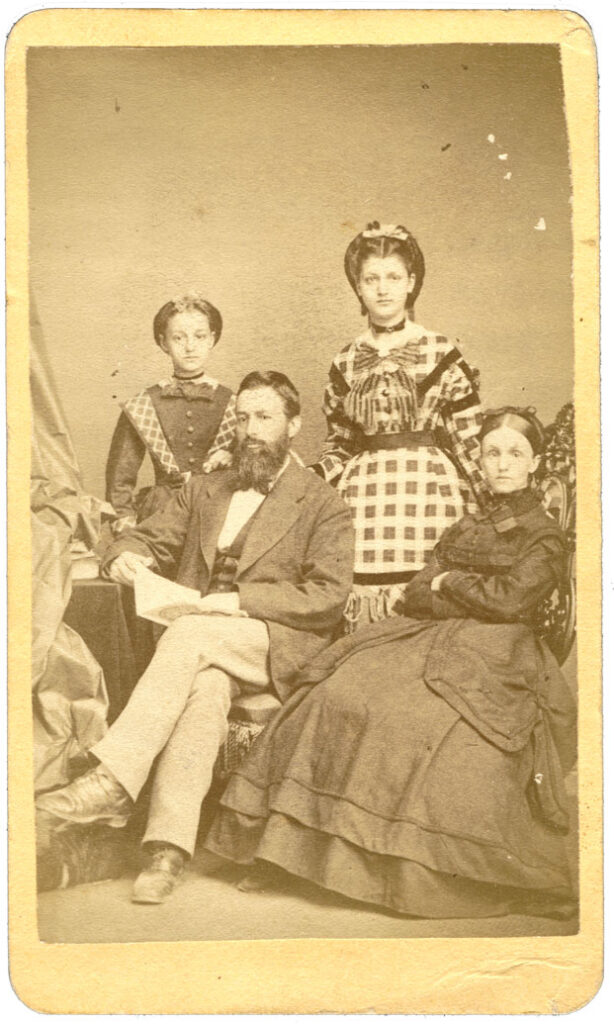Slavery and the founding of MIT
How is the founding of MIT connected to slavery?
I. William Barton Rogers (1804-1882) and Slavery
II. Slavery and the Antebellum Scholar
III. Slavery and the Birth of MIT
IV. History and Its Legacies
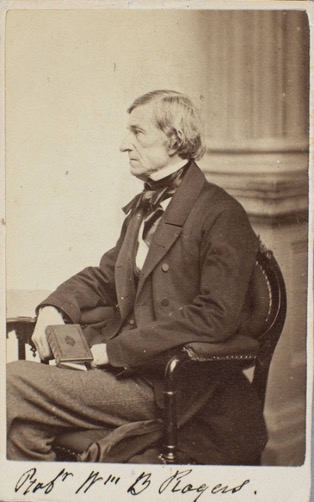
William Barton Rogers, the founder and first president of MIT. Courtesy of the Boston Athenaeum.
I. William Barton Rogers (1804-1882) and Slavery
In 1882 MIT president Francis Amasa Walker chaired a memorial for William Barton Rogers at the Society of Arts. Professor William P. Atkinson, who taught the humanities, read resolutions expressing the sentiments of the meeting. MIT’s second president, the mathematician John Daniel Runkle, offered a history of the Institute, which, he declared, owed its existence to Rogers’s singular vision and restless spirit. The physicist Charles R. Cross recounted the founder’s original contributions to science. On behalf of the Alumni Association, James P. Tolman celebrated the charter president’s gifts as a teacher. President Walker—a brevet brigadier general in the Union Army during the Civil War—introduced the final eulogist: Major Jedediah Hotchkiss, Rogers’s close friend, who “has come from Virginia to offer a tribute, at this meeting, to his memory.”
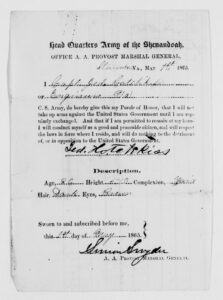
CSA Capt. Jedediah Hotchkiss’s parole, 1865. These passes allowed defeated and captured Confederate troops to travel home following the surrender of the South. Courtesy of the Library of Congress.
One of the nation’s most renowned cartographers, Jedediah Hotchkiss had been the chief topographical engineer in the Confederate Army. A New Yorker who had moved to Virginia a few years before the Civil War, he drew maps that Generals Thomas “Stonewall” Jackson and Robert E. Lee used to secure early military victories. During his tribute, Hotchkiss mentioned a part of Rogers’s life that had begun to fade: his past as a Southern slaveholder. He recalled Levi, Rogers’s “negro servant.” Levi was enslaved.
William Barton Rogers had several slaves during his long career in the South, and his connections to slavery run even deeper. In 1791 his father, Patrick Kerr Rogers, was forced from Ireland over his progressive views on the “Catholic question.” He settled in Pennsylvania, where, in 1780, the legislature had passed a gradual emancipation law. The commercial economy, particularly in Philadelphia, remained tied to Atlantic slavery. Patrick Rogers finished his education at the College of Philadelphia (now the University of Pennsylvania), one of several American colleges that had been founded as the African slave trade escalated in the eighteenth century.
Slavery continued to braid into the story of the Rogers family. Tobacco and cotton planters were funding a dramatic expansion of higher education in the South, drawing scholars from the North and Europe. In 1819 Patrick Rogers became professor of chemistry at the College of William and Mary in Williamsburg, Virginia. Patrick and Hannah Blythe Rogers, and their four sons—James Blythe, William Barton, Henry Darwin, and Roger Empie—moved into Brafferton Hall, the former “Indian College,” where officials had once housed Native American youth, often involuntarily, for education and evangelization.
Enslaved people, belonging to William and Mary, met the Rogers family at Brafferton. Patrick and Hannah soon acquired at least one slave of their own. Their sons William and James enrolled at the college. In 1828, after Patrick Kerr Rogers died, William replaced his father on the faculty. He also became a slave owner.
II. Slavery and the Antebellum Scholar
During his testimonial, Jedediah Hotchkiss casually revealed that Levi (whose surname remains unknown) contributed to William Barton Rogers’s intellectual life. Enslaved people were ubiquitous in the antebellum academy. In 1835 Rogers accepted the chair in natural philosophy at the University of Virginia and an appointment as state geologist. It was the beginning of a remarkable scientific career. During his tenure as a professor and dean of the faculty, Rogers saw hundreds of unfree black people laboring in the university gardens, kitchens, and living quarters. Enslaved people also worked in laboratories, classrooms, and libraries.
“As for poor Levi, I shall remember him as long as I live.”
James Blythe Rogers to William Barton Rogers, 28 November 1837. Distinctive Collections, MIT Libraries.
Settlers in the Virginia backcountry enjoyed seeing Professor Rogers driving a one-horse wagon, loaded with his equipment and supplies, to his research sites. Levi, his assistant, accompanied him on horseback. Enslaved black people often aided and conducted academic research. Levi “became a geologist,” Hotchkiss conceded, who “learned to think as his master thought” during the genesis of that discipline in the United States. James Rogers—William’s older brother and a professor of chemistry at the University of Cincinnati—borrowed Levi for his fieldwork. In 1838 Levi filled in for William, escorting the French geologist Charles Daubney on an Appalachian survey. Hotchkiss imagined the encounter in a racist and derisive dialect, “Dis, sar, . . . we call number one. Mighty fine crap (out-crop) ob it ‘long here.”
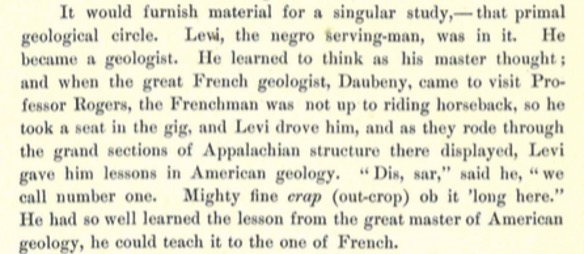
Jedediah Hotchkiss, quoted in MIT Society of Arts, “In Memory of William Barton Rogers, LL.D., Late President of the Society” (Boston: 1882).
Even fragments of Levi’s life raise questions about how knowledge was created and authority credited when enslaved or free black people participated in scientific and technological work. How did Levi influence William Barton Rogers’s geological research? How did he acquire the expertise to substitute for Rogers? How do we acknowledge the presence of enslaved people in the development of science and technology? Manipulating this very tension, Jedediah Hotchkiss once attempted to mask the inhumanity of slavery in his adopted state by contending that the plantations of Virginia were just “thousands of technical schools.”
Enslaved people did every kind of manual labor, and often did skilled work: carpenters, blacksmiths, weavers, and mechanics. They helped advance new modes and methods of production. They were artisans and inventors who accelerated mechanization and industrialization. Slaves were machinists and “engineers,” operating and maintaining mills, tanneries, printing presses, and more.
III. Slavery and the Birth of MIT
[William Barton Rogers] came to live a double life with one foot in the North and the other in the South.
—Philip N. Alexander, A Widening Sphere: Evolving Cultures at MIT (2011).
In 1849 William Barton Rogers married Emma Savage, from an old New England family with roots in Atlantic slavery. They wed in Boston, honeymooned in Europe, and then returned to Virginia. William Barton Rogers was conspicuously silent on the subject of slavery, although several members of the Savage and Rogers families, including his brother Henry–a renowned geologist at the University of Glasgow–became abolitionists. By 1853, the year that they permanently relocated to Boston to lay the groundwork for MIT, William and Emma had six enslaved people in their Charlottesville home. The historical record is silent on the fates of the slaves whom they left behind.
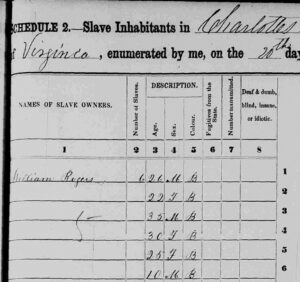
Enslaved people in William and Emma Rogers’s Charlottesville home.
1850 United States Federal Census—Slave Schedules.
Moving north did not sever their ties to slavery. The products of enslaved labor, especially cotton and sugar, were fueling a manufacturing revolution in the northern states. New canals powered cotton textile mills and linked manufacturing centers to coastal ports. In the decades before the Civil War, investors in cotton factories in New England, sugar refineries in the Mid-Atlantic, and inland mining operations and canal projects financed several new technology schools. William Barton Rogers lobbied cotton manufacturers and other industrialists to fund and support the Boston Institute.
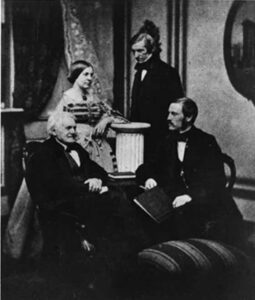
William Barton Rogers and Emma Savage Rogers, with her father and brother. Distinctive Collections, MIT Libraries.
When classes began at MIT in 1865, the technical needs of the cotton, sugar, mining, and railroad industries were a primary focus of research and instruction. For example, Mining and Metallurgy was the premier academic program at the early Institute. It combined Rogers’s research specialty with innovative applications of his “mind and hand” philosophy. Faculty took students on summer excursions to mines from California to Maine, where they tested techniques learned in classes and workshops, and interacted with miners.
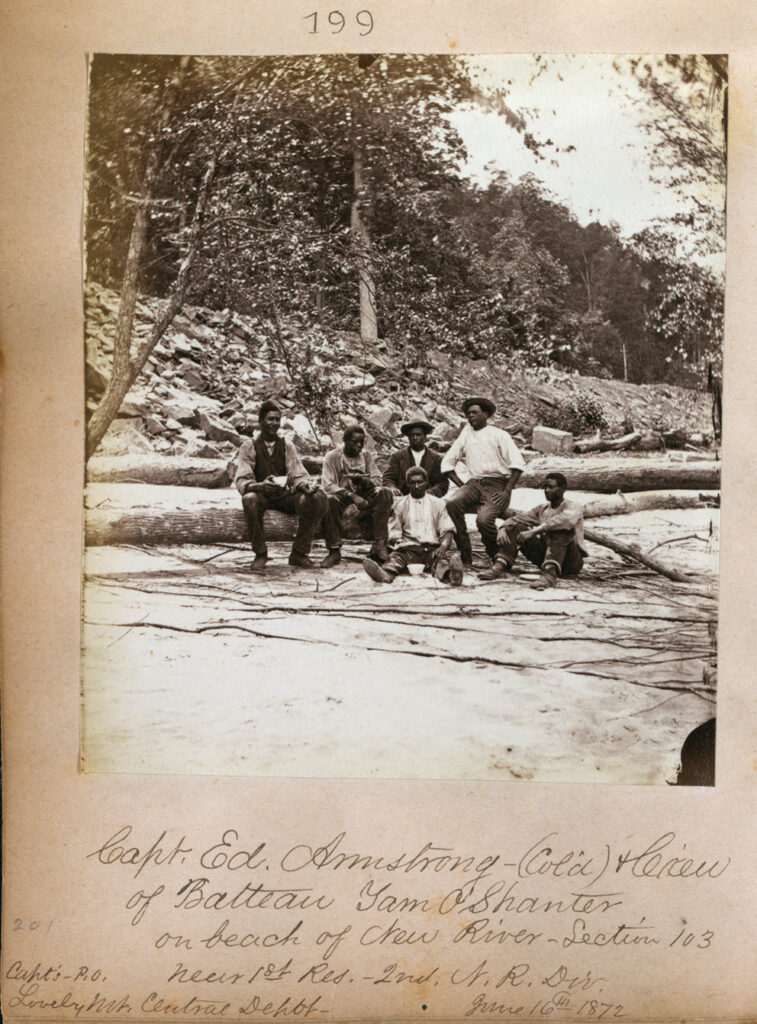
African American workers, including a former Union Army officer, at a river in Virginia, 1872. Jedediah Hotchkiss Photograph Album, Courtesy of the Library of Congress.
The summer school also exposed the nation’s overlapping racist regimes. African American workers, including formerly enslaved people, were overrepresented in many mining industries, particularly in the South. Customs officials at the US-Canadian border harassed several of MIT’s first Chinese students during a mining school tour. (The 1882 Chinese Exclusion Act provided exemptions for a few privileged classes, including students, who were closely surveilled and tightly policed while in the United States.) Moreover, the demand for minerals drove campaigns to seize lands from Native American nations.
Following the defeat of the Confederacy, Jedediah Hotchkiss had leveraged his military experience to build successful mining and timber businesses in Virginia and West Virginia. William and Emma Rogers collaborated on Hotchkiss’s surveys and histories of the Virginias, and the two families formed close bonds, exchanged letters, and enjoyed regular visits. President Rogers maintained his deep ties to the South, and the Institute’s early governors canvassed that region for students, sponsors, and partnerships.
IV. History and Its Legacies
When President Francis Amasa Walker introduced Major Hotchkiss at the 1882 memorial for William Barton Rogers, he unwittingly revealed a somewhat hidden story of the Institute. A Bostonian and decorated Union Army general, who advocated the destruction of indigenous peoples, invited a New Yorker-turned-Virginian-and-Confederate-officer to the podium to eulogize the Philadelphia-born founder of a Boston college, who had spent decades as an Old Dominion slaveholder.

Francis A. Walker, The Indian Question (Boston: 1874).
That phrasing might seem harsh, but it is necessary. In 1853 William Barton Rogers left Virginia for New England. However, he could not leave slavery behind. The enslavement of black people had contributed to his family’s success, underwritten his education, advanced his career, and expanded his social connections. He was, in many ways, a product of slavery. If President Walker and his colleagues were right, that MIT was not possible without William Barton Rogers, then neither was it possible without slavery.
During the Civil War, Francis Amasa Walker had fought alongside African American troops and suffered with African American soldiers in Southern prison camps. He sustained permanent injuries on the battlefield. Later, as a commissioner of the Bureau of Indian Affairs, an editor, and a political economist, Walker helped author ideas and policies that governed the post-war nation. Centuries of enslavement had rendered black people submissive, he concluded, before calling for the imposition of a parallel system of persecution on Native Americans. He envisioned the Civil War opening a new period of white westward expansion that would complete the racial remapping of North America. Walker advocated the destruction of Native American nations in the West through a blend of territorial confinement, social isolation, cultural warfare, and ethnic cleansing.
The celebrants populating the stage at William Barton Rogers’s memorial embodied that unfinished past and perilous future. The Civil War did not culminate in the United States’ graduation from slavery to equality and justice. As MIT entered its first decades, slavery and colonialism were neither history nor mere legacies.
